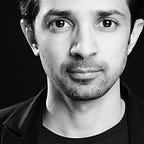How a mapping party in Berlin lead to a global movement to map Africa and beyond
Today, almost to the day is the 6th anniversary of a mapping party that Ivan Gayton , Kashif Rasul and myself organized in Berlin. Little did I know that it would lead to a sustained movement to map previously unmapped parts of Africa on OpenStreetMap (OSM).
Move from disaster response mapping to mapping for preparedness
Ivan and I first met 3 months earlier at the Humanitarian Congress in Berlin; an annual conference run by Médecins Sans Frontières (MSF). I was giving a talk there about the Humanitarian OSM Team and he was attending with his colleagues from MSF. The talk focused on the post-disaster relief efforts that the OSM community provided during a number of disasters starting with the Haiti Earthquake in 2009. Ivan was very quick to see the potential of using these techniques for not just disaster response but for preemptive mapping. At the time he was working with the epidemiology team and responsible for preventing outbreaks of infectious diseases.
Missing Maps
For Ivan and his team having the exact locations of diseases was critical in preventing and containing outbreaks. Often people who came into MSF hospitals had travelled hours from remote areas. When asked for their location, some places were so remote that they couldn’t be found on a map.
Hatching a plan
Ivan passionately made the case to change this situation with help from the OSM community. Thus a plan was hatched. We would organise a series of mapping events for a test region. The area to map was going to be Lubumbashi in the Democratic Republic of Congo and the initial mapping party would be in Berlin. This would be followed by on-the-ground mapping of street names using field papers which at the time was called walking papers. Here’s the twitter feed from that event and the link to the first mapping party from February 15th 2014.
The second event was run in Lubumbashi with on-the-ground assistance from Jorieke Vyncke. Here’s a picture of a couple of volunteers mapping using field papers:
The third and final event was back in Europe in London where volunteers took the papers from the field and manually transcribed the street names into OSM. Harry Wood wrote a nice post about it here. With the success of this project it was decided that a separate organisation should be formed that helps the OSM community and specifically Humanitarian OpenStreetMap Team (HOT) organise around preemptive rather than reactive mapping. This came to be known as the Missing Maps Project:
Since 2014 hundreds of mapping events have been organized through missing maps and today Africa on OSM looks like this.
Today the OSM community is going strong and the use of it’s data in development and humanitarian work continues to grow. I would encourage anyone interested in participating to go to https://www.hotosm.org and get involved.
